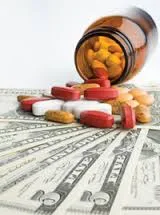Patients often are not compliant with treatment recommendations, even for one medication. As more medications are prescribed compliance deteriorates further.
If a safe, inexpensive, once-a-day pill could substantially reduce the risk of myocardial infarction (MI) or stroke, would people want it? Most would probably say yes because MI and stroke are the first and third leading causes of death, respectively, in the United States.1 It is likely that many employers, health plans, and payers would also say yes because MI and stroke cost the US economy more than $300 billion annually in health care expenditures and lost productivity.2
Improving adherence by simplifying drug regimens and reducing their cost could have far-reaching consequences. In 2003, Wald and Law3 proposed to combine 3 half-dose antihypertensive agents, an intermediate-dose statin, low-dose aspirin, and folic acid into a once per day polypill for primary and secondary prevention of cardiovascular disease. Based on epidemiological models, they estimated that daily use by individuals aged 55 years or older could reduce the incidence of MI and stroke by more than 80%.3
The 4 drugs in the current version of the polypill have long histories of safe use. Although all 4 are frequently prescribed in the United States, the US Food and Drug Administration (FDA) has not approved combining them in a single pill. It has, however, authorized approximately 50 two-drug pills for hypertension.4 Recently, an FDA advisory committee expressed cautious support for using the polypill for secondary prevention of MI and stroke in patients who are unlikely to be closely monitored by a physician. It did not address the larger question of primary prevention.5
Although the polypill could produce substantial public health benefits, people in the United States are unlikely to find out anytime soon. This is because the pill’s price is so low (≤$1 per tablet) and the cost of the large clinical trials required for FDA approval is so high, it is unattractive to investors. The inventor’s dilemma is that creating a product that improves health is not enough; the product must also be able to generate a healthy return on investment. In the United States, the surest way to generate a healthy return on investment is to increase health care spending, not reduce it.
In reality advances in drug delivery systems will be very important for pubic health reasons, compliance and cost reduction. It will require some creative and innovative for financing drug development costs. The technology is ready, can we afford it ? We need innovative venture capitalists. It is doubtful whether the Affordable Care Act will nourish this embryonic technology. What can be done?
First, to inspire innovators, federal agencies and philanthropies should commit a larger share of their research budgets to high-risk, high-reward science. Second, to entice inventors to address challenging problems, there could be greater use of prizes (eg, cash for the first inventor who creates a drug or device that meets a specific need).
Third, to ensure that low-cost, high-value discoveries reach the market, patent buyouts could be offered. This could increase the likelihood that these products are commercialized and offered at prices sufficiently low to encourage widespread adoption.
Fourth, to give inventors access to the capital required to bring a cost-lowering technology to market, a public-interest investment fund could be established. The public-interest investment fund would seek out promising products that are not attractive to conventional investors, and replenish its coffers with shared savings from successful inventions.
Fifth, to streamline the regulatory approval process, the FDA could be authorized to use existing mechanisms, such as fast-track or breakthrough therapy authority, to expedite review of cost-lowering technologies. This would require expanding the FDA’s mission beyond safety and efficacy to address costs.
What is the actual cost to develop a new medication ? The California Biomedical Research Association outlines the process
The studies are spread out from 2010 to 2015 and the increases have been substantial during this period. Keep in mind that reports from pharma are used to justify the high costs of drugs.
Poly drug combinations are made of already approved drugs for single use, and development costs may be far less.
JAMA Network | JAMA | Effects of a Fixed-Dose Combination Strategy on Adherence and Risk Factors in Patients With or at High Risk of CVD: The UMPIRE Randomized Clinical Trial


No comments:
Post a Comment